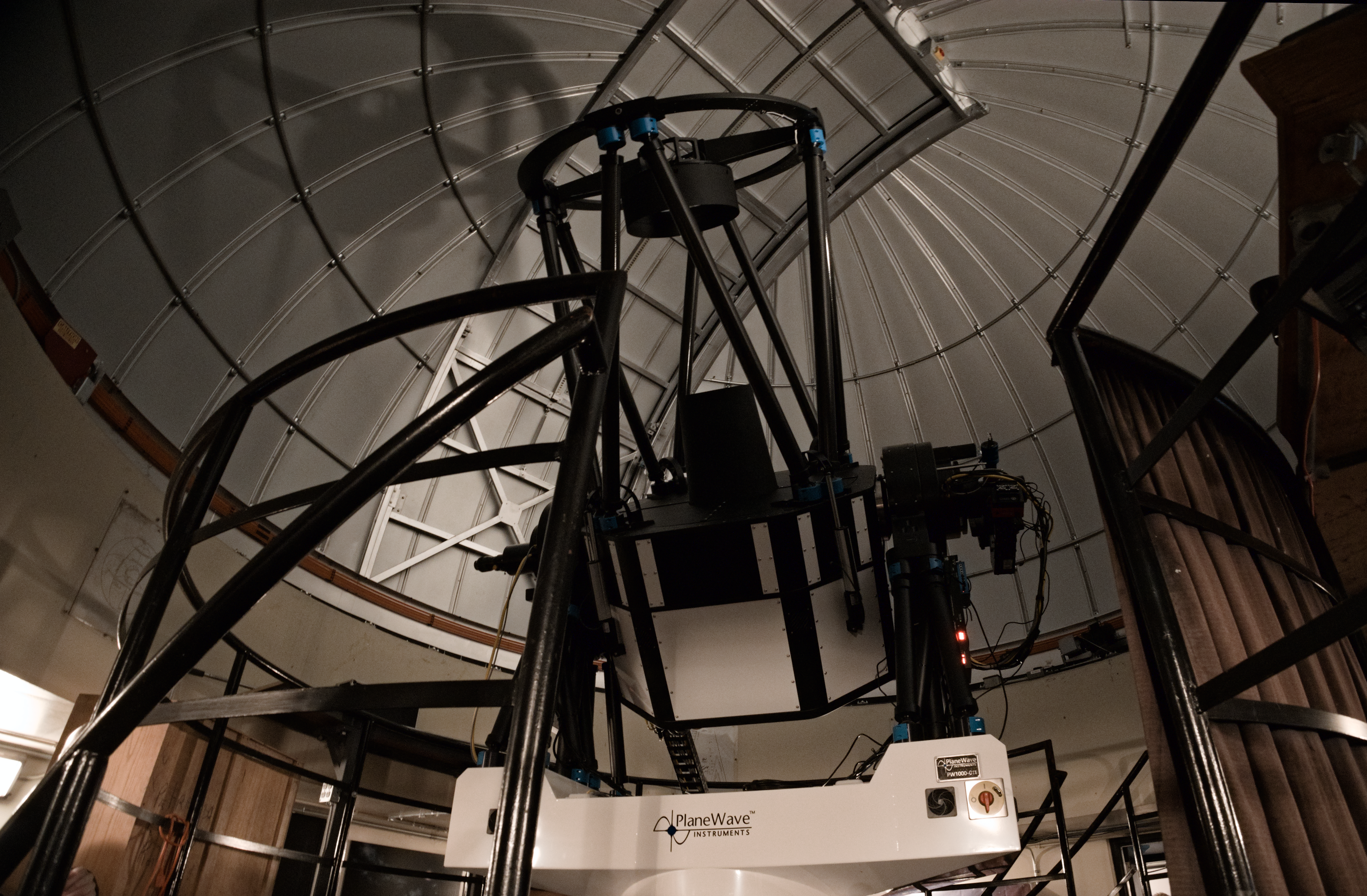You may not often look up at the sky above York. Your view might be typically planted on the pathway in front of you, on the slides projected in your lecture hall, or on the bright light of your laptop screen. But our sky — and the objects suspended in space — are primary objects of study for a few students, faculty, and researchers at the university.
This work happens through York’s own dedicated telescopes, housed at the Allan I. Carswell Observatory, located in the Petrie Science & Engineering Building across from the Arboretum Lane Parking Garage.
It features three large telescopes — complete with rotating retractable domes — and a “flock of smaller telescopes,” Observatory Director and York Professor Elaina Hyde recently told Excalibur. It’s used for a range of research activities, as well as out-of-the-classroom learning opportunities and public outreach.
Excalibur recently had an opportunity to tour the observatory and talk to some of the students working there.
“It’s been wonderful. I started off as a volunteer in my second year,” says Maheen Hemani, now a fourth-year student in the physics and astronomy program. Hemani enjoys her role at the observatory in part because it lets her interact with visitors — who are often not professional astronomers — and “tell them about all the things that mesmerize me.”
Boris Ciric, also in the physics and astronomy program at York, tells a similar story: “What’s cool about [the observatory] is pretty self-explanatory.”
Ciric’s role involves helping out on tours, where he has the opportunity to discuss the science of space, a topic that can easily get technical. When asked how he tries to communicate to a general audience, Ciric says he will “usually try to relate it to something everyday.
“If you’re just ‘word salading’ on someone they usually lose interest fast, but if you’re asking them questions, you’re kind of keeping them engaged and getting them to think [more deeply],” he explains
Not all of the observatory’s work deals with a non-trained population, explains Zachary Sharp, a second-year student in astrophysics. He explains that they “do what’s called ‘class observing’ — where a professor will reach out to the observatory” to book a few nights for their students to utilize the technology in the observatory to boost their understanding of course concepts. This includes a recent NATS course, which took to the observatory to catch a close-up glimpse of the moon last summer.
“As for research, the spectrograph is the thing we use most often,” he explains. This allows researchers to “take a spectre of a variable star and plot its change in brightness over time.”
Sharp also delves into the history of the observatory: it first opened in the 1960s in line with the opening of York’s Keele Campus itself, with its current 60-centimetre telescope and a few 30-centimetre units. The largest telescope, one with a one-metre aperture, was donated in 2019 by retired York Professor Allan I. Carswell, whom the observatory is now named after. Despite it being “very nice” and a much “newer model,” Hemani says the older 60-centimetre “holds a special place in the hearts of many, because many students at York in physics and astronomy have been working on it since the 1960s, since the Petrie Science & Engineering Building was created.”
Hemani also believes space can be meaningful not only for those studying it in school: “Even if you’re not in astrophysics or astronomy […] it’s a very interesting area to study and be curious about.
“It can open up your mind a lot and your horizons in terms of what’s possible. It can help you detach from everything in the world and look beyond things that you’re stuck in and just get a broader perspective about what’s out there.”
The observatory’s staff takes visitors for guided tours every Wednesday evening after sunset. More information on this, and their other public outreach activities like podcasts, livestreams, and observatory-themed gifts, can be found here.


